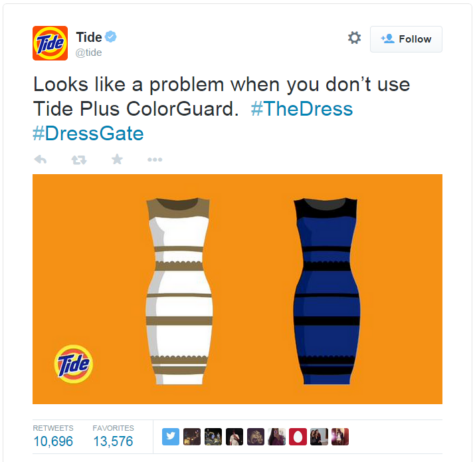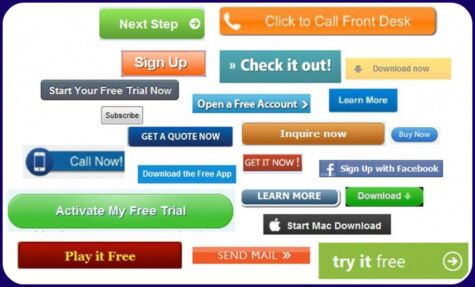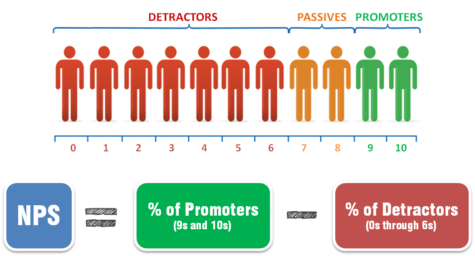Do you fancy yourself a marketing guru, where nothing can surprise you? Do you dream about social media, waking up with your fingers ready to scroll Facebook? Breathe marketing in and out and falling asleep by counting all your likes? But then comes the day when you get stumped by a suspicious set of letters; you find an acronym you don’t know! You can’t allow yourself to stay in the dark, so you try to google it ASAP. Yes, ASAP (as soon as possible)!
Sounds familiar? No worries. You’re not the only one who struggles with abbreviations and marketing acronyms. Although you can guess many of them, other ones require a bit of an explanation. We decided to provide you a list of marketing acronyms that every marketer needs to know!
AIDA
Attention -> Interest -> Desire -> Action
It explains events that happen after potential consumers interact with an advertisement. The other name for it is “Purchase Funnel”, but AIDA can be seen more often.
B2B
Business-to-business – The situation and model of cooperation where a particular business interacts and makes transactions with other businesses (B2B).
B2C
Business-to-consumer – The situation where a business connects with individual clients.
B2E
Business-to-employee – The model of cooperation where a business connects with employees by providing services or products for them.
CPA
Cost per action – An online advertising pricing model. You pay only if the desired action has been taken. The definition of CPA is very general, and CPA itself can be divided into more specific actions such as CPI (Cost Per Install), CPL (Cost Per Lead), CPC (Cost Per Click) or CPS (Cost Per Sale).
RTM
Real time marketing is a strategy, a part of a strategy, or an action based on the current and latest trends, events, or feedback received from customers. It can really win-over your customers hearts!

RWD
Responsive web design is one of the most vital things when it comes to creating a new website. It refers to the allowance for desktop websites to be shown in response to the size of the screen or browser. Bearing in mind the variety of devices, computers, and web browsers a single website can be viewed with, it is necessary to take care of that aspect.
UI / UX
You shouldn’t ignore either of them, as they may be a blessing or a curse for your website and marketing.
UI – User Interface Design – This simply means “designing the most useful interface”, and it’s about focusing on maximizing the usability of a product, website, computer, mobile or electronic devices, for any end-user.
UX – User Experience Design – This is about keeping your customer satisfied while using and interacting with your product and its constant improvements of usability and features.
CTR
Click Through Rate (CTR) is one of the most important statistics that every marketer should cherish, especially if they manage a lot of campaigns or take care of SEM (Search Engine Marketing). Click Through Rate shows the percentage of people who click on your advertisement after seeing it – a ratio between those who clicked and those who saw it and didn’t interact further.
CTA
CTA means call-to-action and it’s something that provokes the audience to react in a specific and defined way. It often uses imperative verbs.

Source: Pinterest
CMS
Content Management System is a computer application for organizing the publication and editing of prepared content.
CRM
Customer relationship management is focused on managing an interaction with customers and potential clients based on analyzing data, predicting retention, and improving business relations with current and future customers.
NSFW
Not Safe For Work – This kind of content is regarded as inappropriate to be displayed publicly (e.g. in the workplace), such as explicit language, nudity, or gore.
SEO
Search Engine Optimization – A form of marketing focused on the process of increasing a website’s visibility in search engines’ unpaid results by providing organic, earned results.
SEM
Search Engine Marketing – Another type of marketing in which increasing the visibility in search engine results pages matters the most. To achieve success with this kind of website promotion, your activities should be based on mainly paid advertising.
KPI
Key Performance Indicator – One of the most essential statistics that your business should be aware of. KPI is a measure used for appraising a company’s performance and evaluating the success of meeting specified objectives. By picking some KPIs, you can set reachable goals and report your performance as well as make some improvements and corrections.
LP
It is rarely used, but can lead to some problems for those who don’t use this abbreviation. LP means Landing Page, and is often used in describing promotional campaigns, for example. Landing Page is a webpage that is the entry point for a website or a particular section of a website.
Start your free trial and find out how you brand is doing on social media!Learn more
NPS
Net Promoter Score is a simple index ranging from 0 to 10 used to measure how willing a customer is to recommend your products. It is a relatively easy way to estimate the overall satisfaction of customers and a base to improve customer service and loyalty. The score is not a percentage and it is based on scores of 3 groups of people – Promoters (those who recommend and give 9-10), Passives (7-8) and Detractors (0-6), and calculated by using a formula Promoters-Detractors (you don’t take Passives into consideration!).
It helps by providing the best metric of how your customer service and satisfaction is doing.

source: KNAK
ROPO
Research Online, Purchase Offline (also known as ROBO – Research Online, Buy Offline) is a trend of researching online for reviews, opinions, and prices before making a final purchasing decision in a store. There’s also a term like Reverse ROPO – Research Offline, Purchase Online.
LA
Lookalike Audience lets advertiser reach people who share similar interests with defined target groups. This supports existing campaigns and finds new potential customers on Facebook.
CA
Custom Audience on Facebook is an audience made of your existing customers by collecting their e-mails or tracking their activity on your website by using Facebook Pixel.
ROI
Return On Investment – As many say, “At the end of the day, it’s ROI that counts”. Anything you do, no matter what, should meet your ROI requirements. It is used to measure the efficiency and cost of an investment to gained results. If it is high, you can open some champagne and start celebrating. There are a few ways of calculating your ROI – you can simply divide net income and investment, or use some more complicated formulas to calculate ROI to suit your needs.
SNP
Social Networking Potential is used for measuring the strength and drive of viral marketing. It represents the size of one’s social network and their ability to influence this particular network. A person with a high SNP is often called an “Alpha User”
TOFU / MOFU / BOFU
Top/Middle/Bottom of Funnel are terms used in funnel marketing to describe the steps of attracting a potential customer and turning them into a loyal client.
TOFU – Top of Funnel – is dedicated to recognizing your customers’ persona, their potential needs, desires, and thoughts.
MOFU – Middle of Funnel – focuses on lead nurturing and offering added value to those interested in your business, to move them a bit further with making a decision or purchase.
BOFU – Bottom of Funnel – is about transforming leads into clients with e.g. some personalization or special offer.
UU
The definition of unique users should be widely known by most marketers, but it still leaves them confused all too often. Who is a unique user (or visitor – you can use both of these terms)? An individual requesting pages from your website during a given period regardless of the frequency of their visits (and visits refer to the number of times a site is visited). Measuring unique users is still a popular way to estimate the popularity of websites, so you should be aware of how to measure them correctly.
OKR
Objective and Key Results is a form of management and tracking a company’s objectives, where key results are measured by quantitative metrics and analysed on a daily basis, but summed up over a longer period of time.
TOV
Tone of voice is a description of the language, construction of sentences, sound, and personality of the communication you provide. By defining it, you can customize your communication to your target group’s needs, requirements, and feelings. It should reflect your brand’s “persona” and deliver better results.
Did you know all of them? Then well done! If not, we hope you learned a thing or two. Now it’s time for you to surprise us – let us know in the comments what we have missed and what we should know or add to this list.




